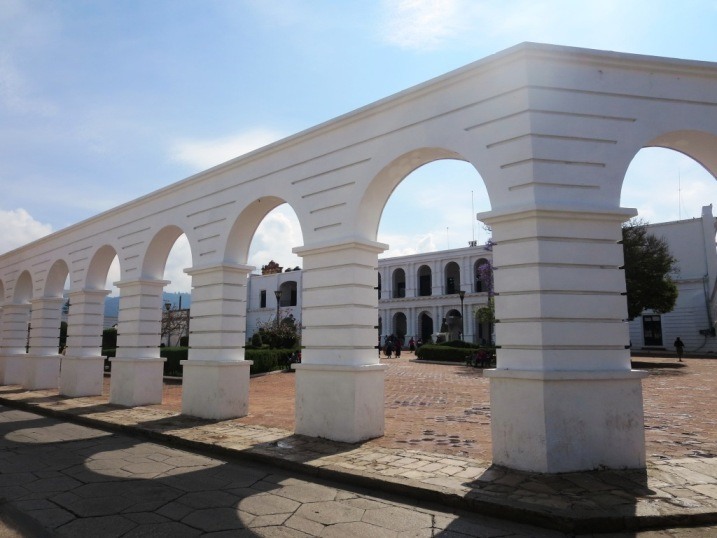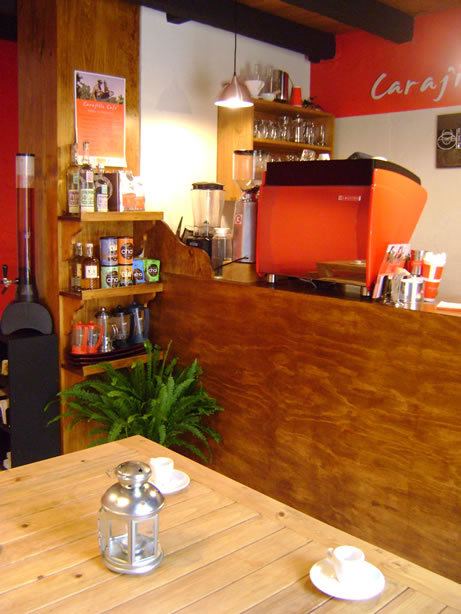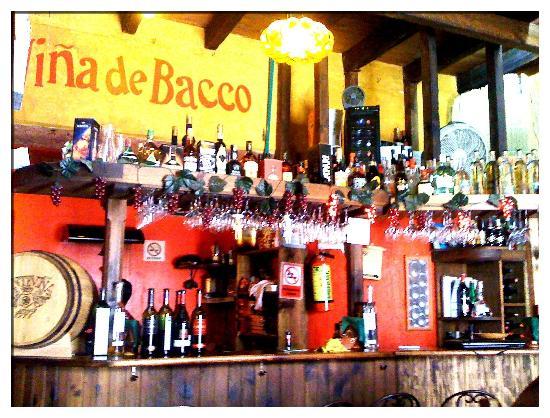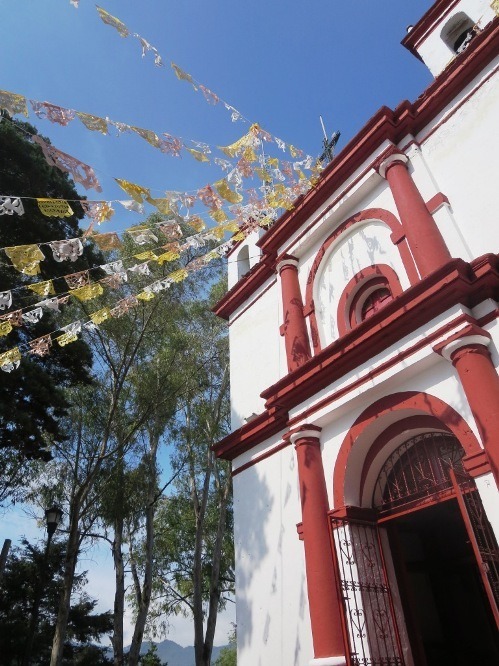This post may contain affiliate links. As an Amazon Associate I earn from qualifying purchases.
* * *
When I first booked my trip to Central America, I signed up for a Spanish program incorporating 4 hours of private tutoring per day, thinking I’d ramp up to 5 or 6 hours by the end of my trip.
What a fool I was: learning a language is exhausting. The reason that immersive language programs are so successful is because they are intense. Don’t believe me? Here’s what life is like for me this week as a Spanish student in San Cristóbal de las Casas.

6:30 a.m. Unlike Guatemala, it’s possible to “sleep in” here — life runs on a different schedule in Mexico! I immediately spend about 15 minutes doing simple exercises after I wake up, not because I’m a gym junkie, but because otherwise it’s too cold to convince myself to get out of bed! It was 54 degrees when I woke up and there’s no heat in the house.
7:30 a.m. Morning is my favorite time of day, so for 30 blissful minutes after showering, I check my email, read a few online articles, and peruse Twitter feeds. I’m not too productive, but for a short while, I feel like I’m still back home.
8:00 a.m. Meeting my housemates and host family in the kitchen, we share conversation (in Spanish) over breakfast. Today we’re having scrambled eggs with tomatoes and onions, refried beans, and tortillas — a typical meal that I eat frequently.
9:00 a.m. I have free time every day before lunch, which is the fun part of being abroad! Today I’m heading to yoga class, followed by time at a local cafe to write my blog, talk to the friendly barista (in Spanish, por supuesto), and fill out job applications for my return to the USA.

Other days, I take care of errands like laundry and bank runs, head to the local market for exploring, or perhaps take a quick half-day outing to nearby attractions. I make a special effort to complete all errands or tours in Spanish, which is easy here…hardly anyone speaks English!
1:00 p.m. I grab lunch on my own. Lunch is the main meal of the day in Mexico, and most restaurants offer a set lunch of appetizer, entree, and dessert for $5-8, but today I grab chorizo quesadillas at the local market made fresh from my choice of the butcher’s offerings.

2:30 p.m. Class begins. While every school is different, usually half the class is spent learning grammar and vocabulary and the other half is conversation practice. My current teacher is tough, but I love that he pushes me to improve drastically. I’ve cut back my class time from when I started — the opposite of my expected plans — because I need more time practicing in “real world” situations. Plus, a shorter class means my focus is stronger. Work smarter, not harder.
>>>>> Related Post: How to Choose a Spanish School
5:30 p.m. I head out with another student to grab a drink after class. There’s a great local wine bar offering glasses of wine for $2, including a free tapa. It’s fun to chat and practice our Spanish in an informal setting.

7:00 p.m. My walk home in the evening is always interesting because the city is starting to get busy around this time of day, but there are still a few quiet spots to be found. I try to catch my husband on Skype and then get started on my homework, which I spend 2-3 hours on daily.

8:45 p.m. Dinner here is always late, and it’s more of a snack than a meal, such as a half-sandwich or a few empanadas. Regardless, there’s about 8 of us eating and it’s a loud, boisterous meal with lots of Spanish conversation.
9:30 p.m. I head into my room to finish my homework, but am interrupted by the five-year-old at my homestay who wants to hang out. Children are some of the best teachers of a foreign language, which can be a very humbling experience. I don’t have long to play, with homework still on my desk, but it works out well since his bedtime is earlier than mine anyway.
11:00 p.m. Finally, I go to bed and sleep soundly because my mind is worn out. It’s been a long time since I’ve had an educational challenge, and even six weeks into the trip, it’s hard work. I’m still not at the level I’d like to be, but my immersion has made a huge impact in my ability to communicate and understand Latin American culture.
* * *
Have you ever considered an immersive language program?


I imagine it comes down to motivation. When I started my new job, I was offered Rosetta Stone’s immersion course in Dutch. I didn’t get past the 1st week and I gave up. I simply couldn’t be bothered!
Funny thing is it’s not like I’m inept at languages too…I’m fluent in English,Spanish, Chinese. Used to be ok in French..but Dutch seemed like a step too far.
@Points to be Made, Absolutely it comes down to motivation. I’ve met other students who go to class for 2-4 hours a day, don’t do any homework or self-study, and head to the English-speaking expat bars or English-led tours to spend their free time. They’re still learning, but at a different pace and level.
Becky,
How have the Spanish language schools you’ve attended varied in class size? I’m looking at a school that advertises, “Spanish is taught on a one on one student teacher ratio or up to three students per group”. Is this common? Do you have a preference or recommendation about class size?
@Scott, Some of my classes were fully one-on-one, in which case it is VERY important that you work well with your instructor. Teaching style (and learning style) must click and you even need to have some common interests. Part of classwork is just daily dialogue and conversation, so you should have someone you can hold a conversation with…
Group classes are GREAT for beginning students or learning vocabulary since hearing other students is another great way to learn. And by listening to their mistakes (and the corrections), you can actually learn a lot of concepts even if you’d otherwise get it correct just through rote memorization on your own. But obviously if there are things you just aren’t grasping, you might not get the attention you need when your teacher’s attention is split between students.
Best option is to blend both. A lot of my schools offered ~3 hours of private tutoring + 1 hour for group discussions or even language games. That’s a great half-day course! Others offer afternoon informal activities (led in Spanish) or lectures or field trips, where you still get that group interaction.
If budget’s tight, just swap the proportions…take group classes for the longer segment daily and just add in private tutoring to focus in on where you have problems to tackle.
WOW! Sounds like a great experience. How long were you there? Did you retain much once you left the setting? We have a 10 year old…do you think this is appropriate way to learn for them?
@Chris, I studied 3 weeks in a row, then 1 week travel, then 1 week classes, then 1.5 weeks travel. So, I had a lot of time to practice!
I retained a lot of the vocabulary, but when you stop using it everyday, you can definitely tell that your recall/speed suffers. Now, when I travel to Latin America, it takes me a solid 3-4 days to get back in the swing of things (I can communicate immediately but it’s broken/rough Spanish until I settle in).
There are definitely kids at classes, but you’ll want to make sure you choose a school and teacher that specifically caters to their learning style!
Thank you